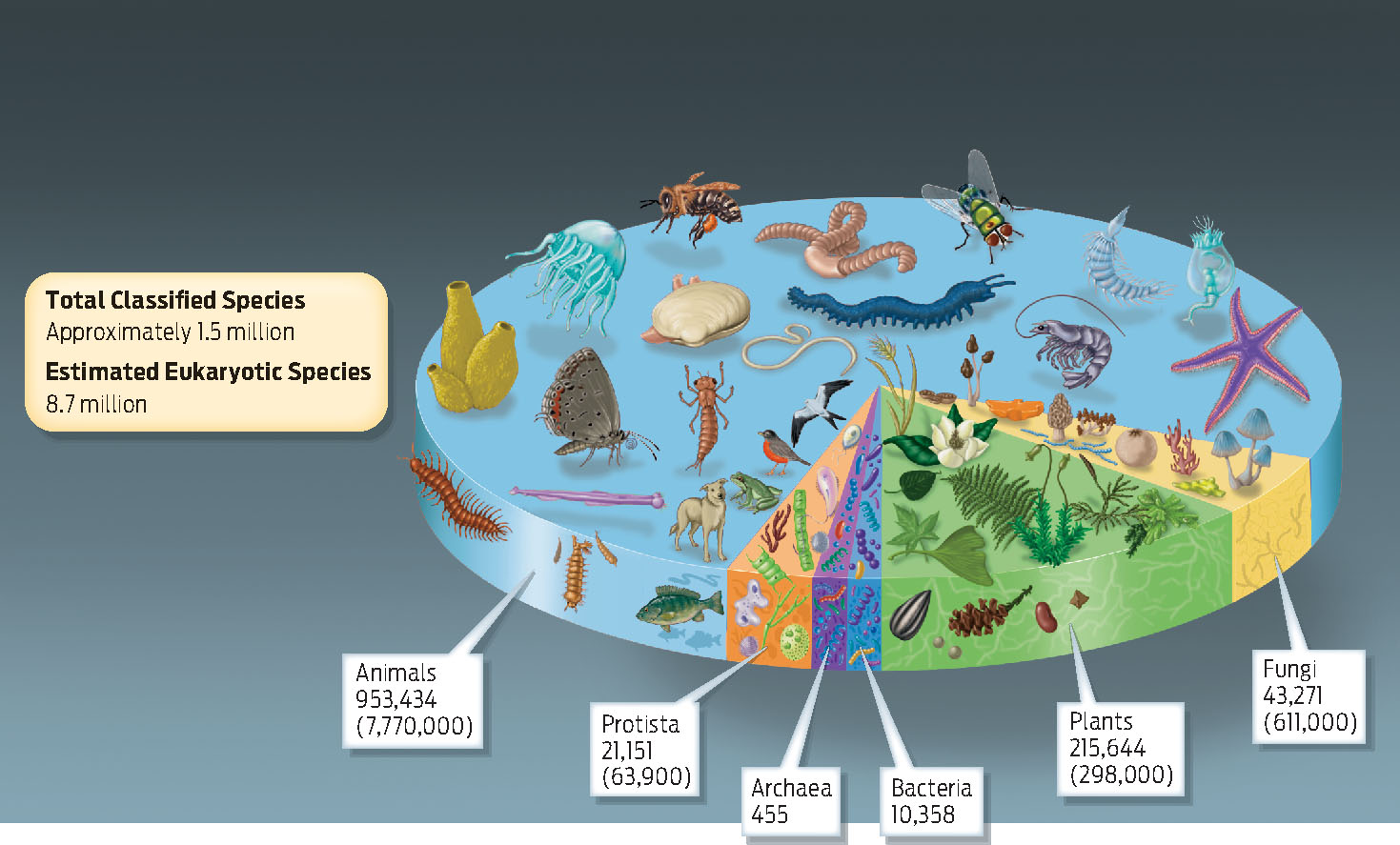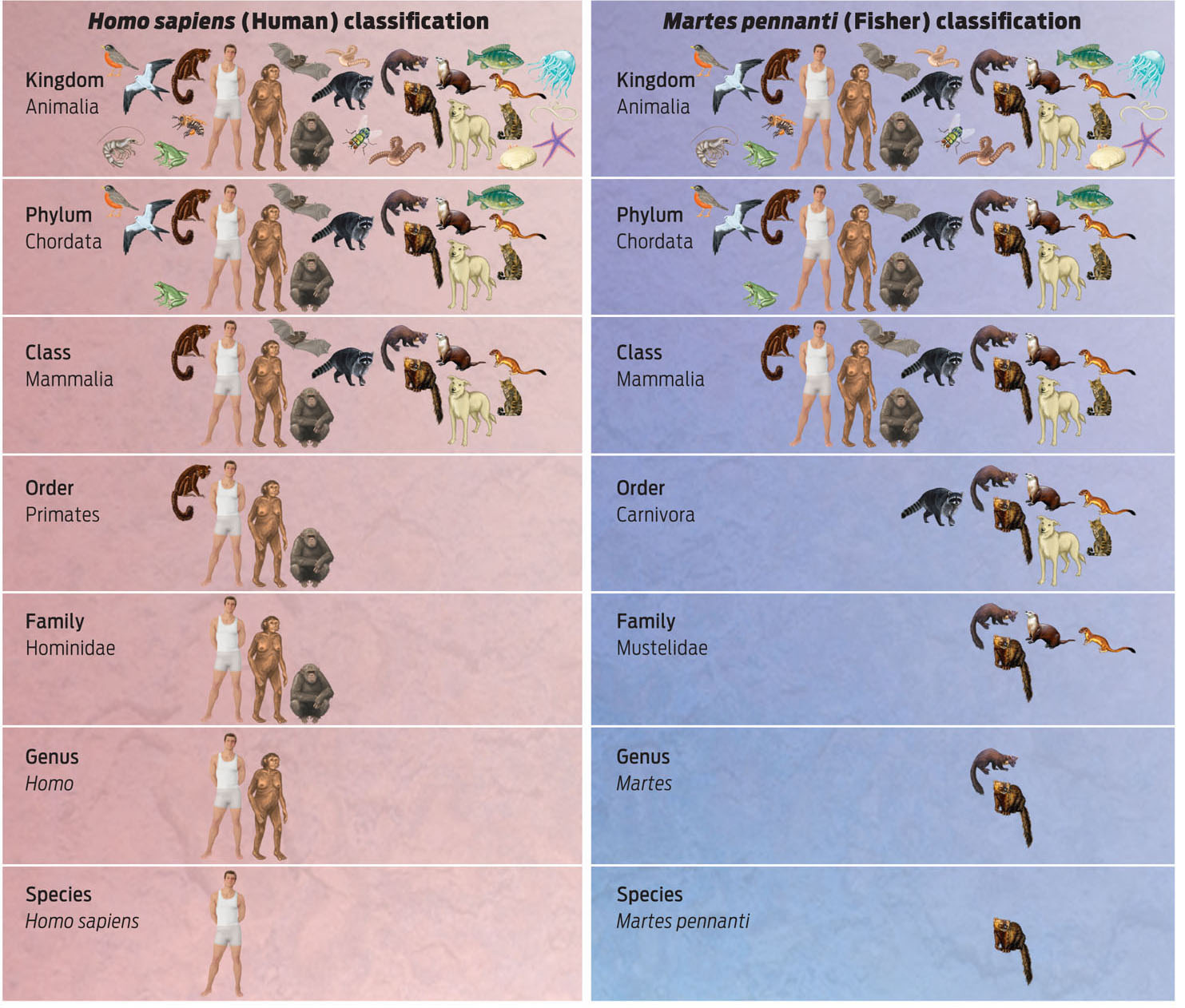DIVERSITY AND TAXONOMY
 How many species are there on Earth, and how do scientists keep track of them?
How many species are there on Earth, and how do scientists keep track of them?
ANSWER: Current estimates of the total number of species on Earth range anywhere from 5 to 30 million, of which 1.5 million or so have been formally described. Many of these species are found in diversity hot spots like rain forests, and new species are constantly being discovered—on the order of 17,000 new species a year (INFOGRAPHIC 17.5).
The numbers of species in each group below represents only those that have been formally characterized and classified. The true number of species is likely to be much higher (estimated numbers are shown in parentheses). Prokaryotic diversity may be immeasurable because of their size and ability to live in just about every environment on the planet. Therefore, it is not currently possible to make reliable estimates for the true number of prokaryotic species.

TAXONOMY The process of identifying, naming, and classifying organisms on the basis of shared traits.
With so many species out there, how do scientists keep track of them all? The process by which scientists systematically identify, name, and classify organisms is called taxonomy. (Taxonomy is part of the broader study of systematics, the study of biological diversity of life on Earth.)
Taxonomy is an attempt to impose a human sense of order on this vast array of species, categorizing them on the basis of features they have in common, such as whether their cells are eukaryotic or prokaryotic, whether or not they photosynthesize, whether or not they have four legs and fur.
VERTEBRATES Animals with a rigid backbone.
To sort organisms, taxonomists use a system of seven progressively narrower categories: kingdom, phylum, class, order, family, genus, species. As you move down the list, from kingdom to species, the categories are increasingly exclusive, until finally only one member is included. The genus and species names provide a useful scientific identifier for every living organism. Because that scientific name is in Latin, it can be easily recognized in many languages.
MAMMALS Members of the class Mammalia; all members of this class have mammary glands and a body covered with hair.
Take humans, for example. Humans are animals, members of the kingdom Animalia. Within the animal kingdom, they belong to the phylum Chordata, a group that includes the vertebrates, animals with a rigid backbone. Further, humans are mammals, members of the class Mammalia; they share with all members of this class mammary glands and a body that is covered with hair. Humans belong to the Primate order, which also includes monkeys, apes, and lemurs. And humans are members of the Hominidae family, and so are closely related to their fellow hominids: chimpanzees, gorillas, and orangutans. Our scientific name—made up of our genus and species names—is Homo sapiens (“wise human”) (INFOGRAPHIC 17.6).
Organisms are classified into groups that are increasingly exclusive. In the broadest category (animal kingdom), all animals are included. Closely related organisms are grouped based on morphological, nutritional, and genetic characteristics. There are far fewer organisms in an order than in a phylum.

Classification would seem to be a simple matter—just observe, measure, and sort. But deciding which category an organism belongs in can sometimes be tricky, as the example of convergent evolution has shown. Sometimes, to properly classify organisms, scientists have to look a little deeper.